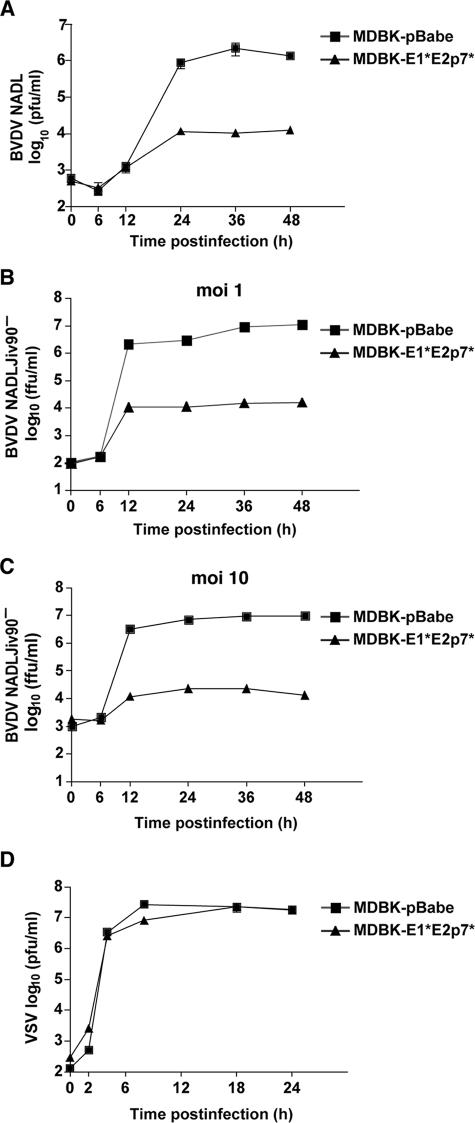FIG. 2.
Cells expressing BVDV E1*E2p7* are resistant to homologous BVDV infection. (A) Cells transduced with a retroviral vector expressing the E1*E2p7* sequence, MDBK-E1*E2p7* cells (triangles), and MDBK-pBabe control cells (squares) were infected with BVDV NADL. Each point represents the mean titer of virus present in the supernatants of duplicate wells at the indicated time point postinfection. This graph shows representative data from at least two independent experiments. (B and C) MDBK-E1*E2p7* (triangles) and pBabe (squares) cells were infected with ncp BVDV NADLJiv90− at an MOI of 1 (B) or 10 (C), and supernatants were harvested as described above. Titers were determined by focus-forming assays performed in duplicate. (D) MDBK-E1*E2p7* cells are permissive for heterologous VSV infection. MDBK-E1*E2p7* (triangles) and pBabe (squares) cells were infected with VSV. Supernatants were harvested as described above, and titers were determined in duplicate by plaque assay. For all panels, error bars show the standard errors of the means.

